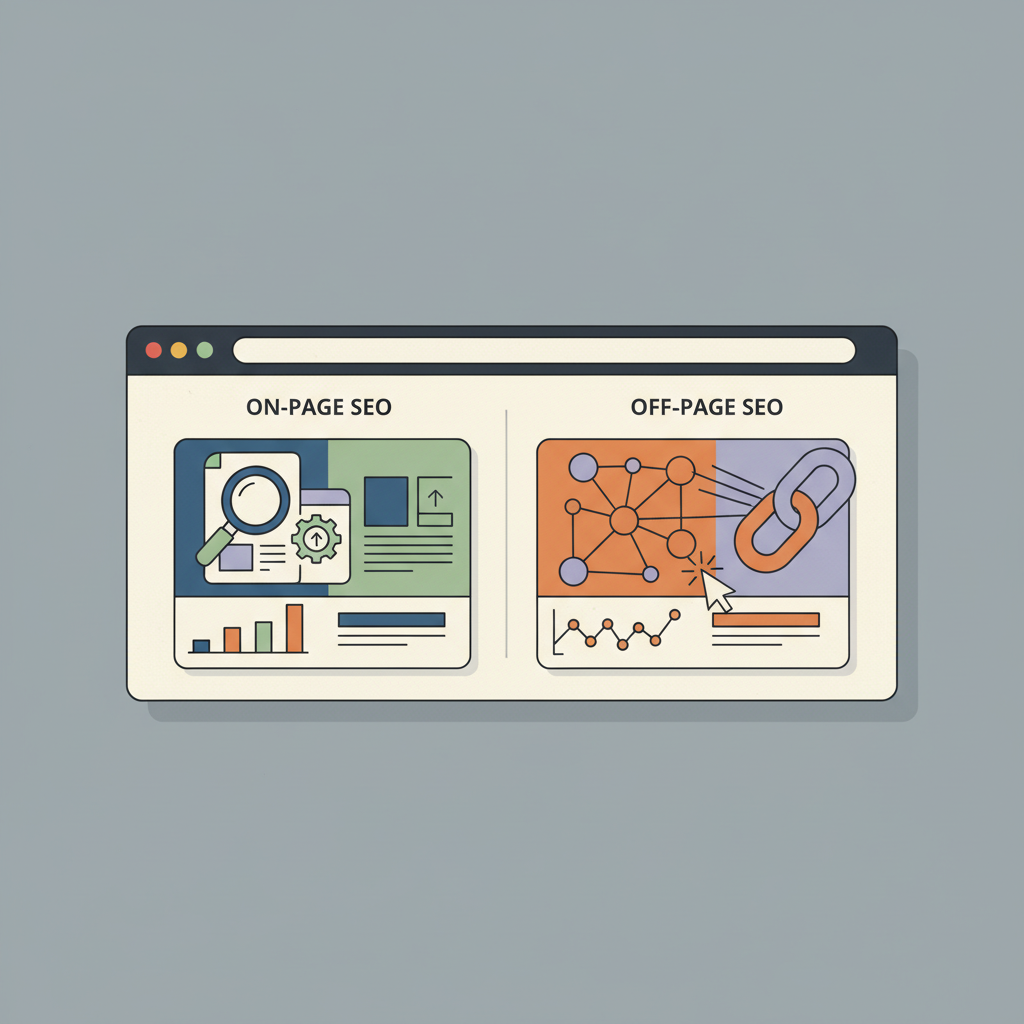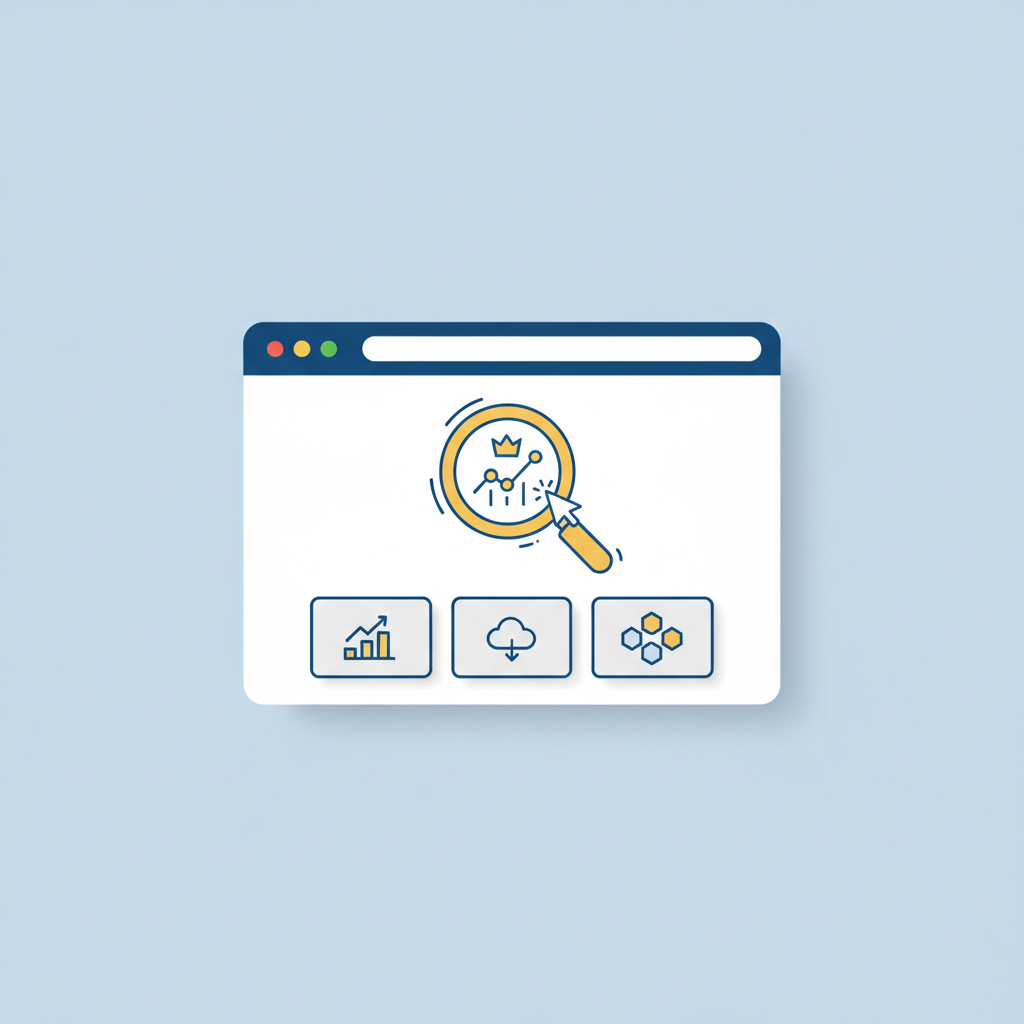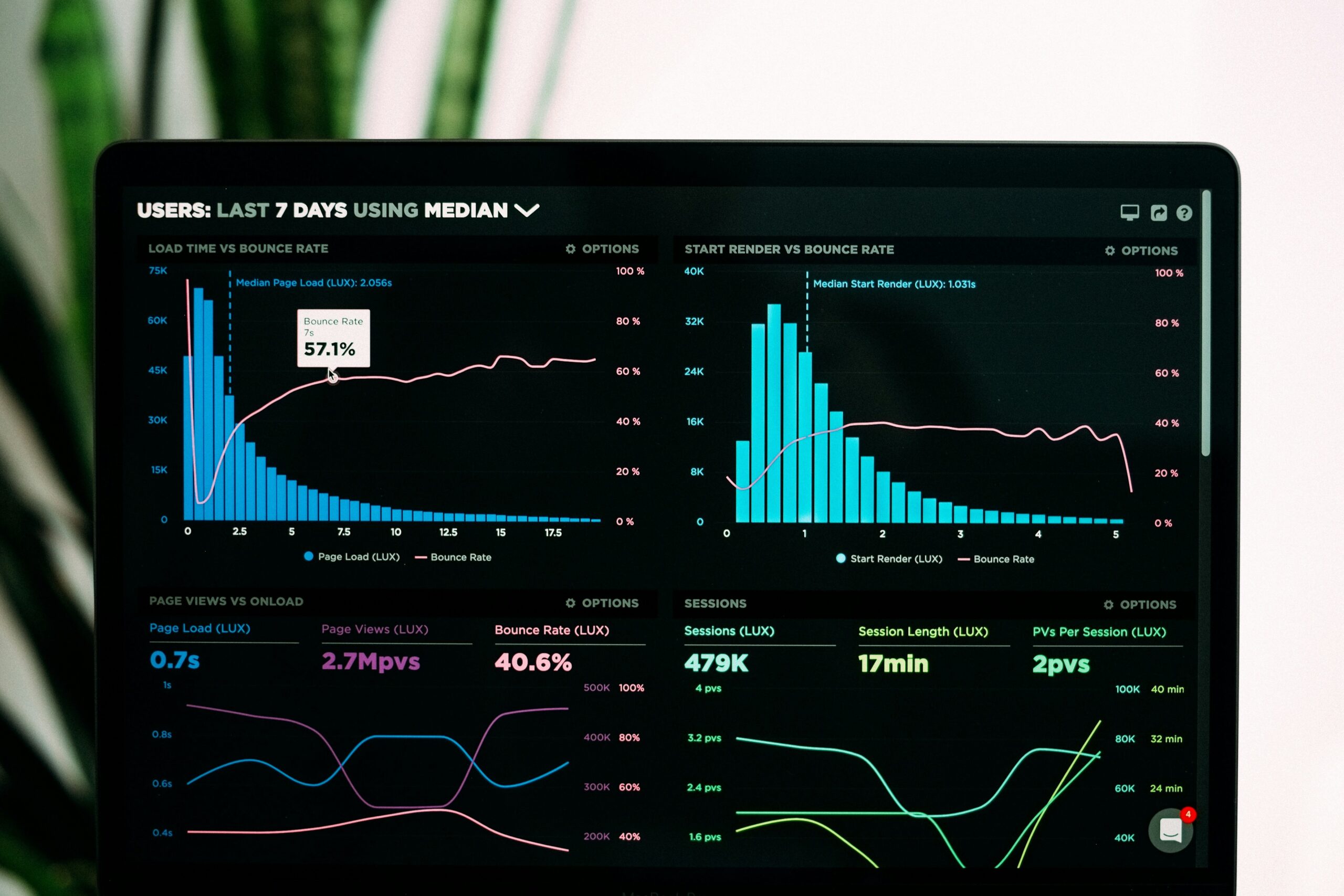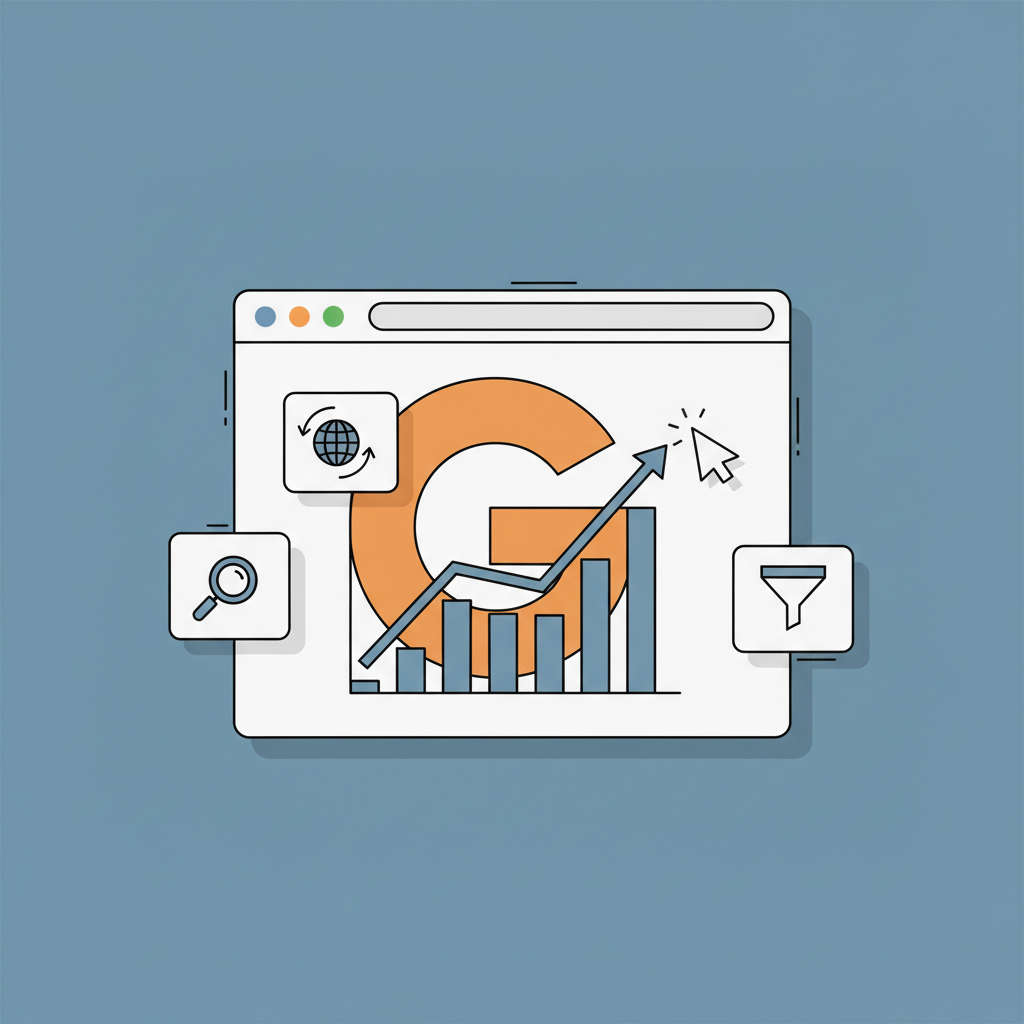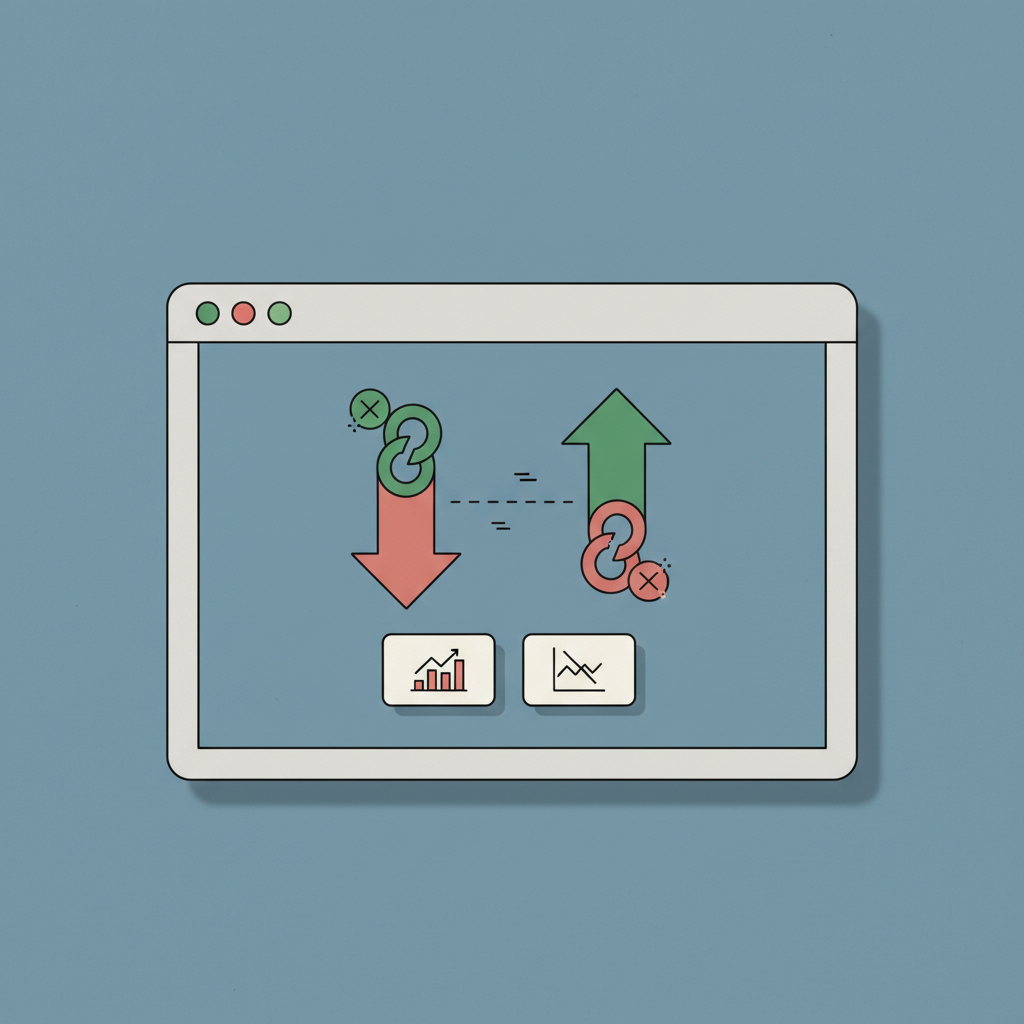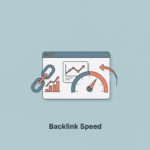Introduction: Beyond Content Chaos – Building a Strategy That Drives Growth
Many marketers find themselves trapped on a relentless content treadmill. You publish blog posts, create videos, and post on social media, but the needle barely moves. Traffic is stagnant, leads are scarce, and you feel like you’re shouting into a void. This common frustration stems from a fundamental misunderstanding of how search engine optimization (SEO) truly works. The debate often centers on On-Page SEO vs. Off-Page SEO, treating them as separate, competing priorities. Should you focus on perfecting your keyword density or on building backlinks? The answer is neither—and both.
The real solution lies a level deeper. A successful SEO program isn’t built on isolated tactics; it’s built on a comprehensive content marketing strategy. This strategy is not just a calendar of what to post and when. It is a strategic roadmap that aligns every piece of content you create and every promotional effort you undertake with clear business objectives. It’s the framework that transforms random acts of content into a cohesive system that drives sustainable growth. This guide provides that framework. We will deconstruct the process of building a robust content strategy from the ground up, showing you how it serves as the engine that powers both your on-page and off-page SEO, finally bridging the gap between effort and results.
Section 1: What is a Content Marketing Strategy (And Why It’s Non-Negotiable)
Before diving in, it’s crucial to distinguish between a content plan and a content strategy. A content plan is tactical; it outlines the ‘what’ and ‘when’—the specific topics you’ll cover and the schedule for publishing them. An effective content strategy is the ‘why’ and ‘how.’ It’s the high-level vision that defines your target audience, your core messaging, the channels you’ll use, and how you’ll measure success. It’s the guiding philosophy that ensures every on-page optimization and off-page signal contributes to a larger business goal.
Operating without a documented strategy is like trying to build a house without a blueprint. The consequences are predictable and costly: wasted resources on content that doesn’t resonate, inconsistent messaging that confuses your audience, an inability to measure what’s working, and an ultimate failure to achieve meaningful business outcomes. Your on-page SEO efforts will lack direction, targeting keywords that don’t convert, while your off-page SEO will feel like a series of disconnected, low-impact activities.
The primary benefits of a documented strategy are transformative. It ensures every team member, from writers to marketers, is aligned and working toward the same objectives. It fosters a consistent brand voice that builds trust and authority. Most importantly, it provides a clear framework for measuring performance, allowing you to calculate your return on investment (ROI) and make data-driven decisions to fuel sustainable audience growth.
Section 2: Laying the Foundation: Setting SMART Goals and Defining KPIs
A powerful content strategy begins with clear, purposeful goals. To be effective, your content goals must be directly tied to overarching business objectives, such as generating more qualified leads or driving e-commerce sales. This alignment ensures that your content is not just an expense but a strategic asset.
To bring clarity and focus to your objectives, use the SMART goal-setting framework. This ensures your goals are Specific, Measurable, Achievable, Relevant, and Time-bound.
Here’s how SMART goals apply to both on-page and off-page SEO:
- On-Page SEO Goal Example: “Increase organic traffic to our top 10 product category pages by 15% in the next quarter by optimizing meta titles, descriptions, and on-page content for transactional keywords.”
- Off-Page SEO Goal Example: “Acquire 25 high-authority backlinks (DA 50+) to our new pillar page on ‘Project Management Methodologies’ within the next six months through targeted guest posting and digital PR outreach.”
With goals established, you must define the Key Performance Indicators (KPIs) you’ll use to track progress. These metrics will differ depending on the stage of the marketing funnel you’re targeting.
| Funnel Stage | Objective | On-Page KPIs | Off-Page KPIs |
| Awareness | Attract new audiences and build brand visibility. | Organic Impressions, Keyword Rankings, Non-Branded Organic Traffic | Brand Mentions, Social Media Reach, Referral Traffic |
| Consideration | Engage prospects and build trust. | Time on Page, Pages per Session, Email Newsletter Sign-ups, Lead Magnet Downloads | Social Engagement (Shares, Comments), Backlink Growth |
| Decision | Convert prospects into customers. | Conversion Rate, Demo Requests, Free Trial Sign-ups, Sales Attributed to Content | Positive Reviews, Affiliate Link Clicks |
Export to Sheets
By setting SMART goals and defining clear KPIs, you create a system of accountability that connects your day-to-day content activities directly to tangible business results.
Section 3: The Cornerstone of Your Strategy: Deep Audience Research and Persona Development
The advice to “know your audience” is a cliché, yet most content fails because it’s based on shallow, generic assumptions. A winning content strategy moves beyond demographics to build a deep, empathetic understanding of your audience’s pain points, motivations, and decision-making processes. This is the foundation upon which all successful on-page and off-page SEO is built.
Effective audience research is a blend of qualitative and quantitative methods.
Qualitative Research: The ‘Why’ Behind the Data
Qualitative research provides the rich, narrative context that data alone cannot.
- Customer Interviews: Ask open-ended questions about the challenges they faced before finding your solution, what their buying process looked like, and what language they use to describe their problems. This is a goldmine for on-page content ideas.
- Sales and Support Team Feedback: Your frontline teams talk to customers all day. Set up regular sessions to ask them: What are the most common questions you hear? What are the biggest objections?
- Online Community Monitoring: Monitor relevant subreddits, Quora topics, LinkedIn Groups, and Facebook Groups. Pay attention to the questions people ask and the frustrations they share.
Quantitative Research: The ‘What’ at Scale
Quantitative research provides the hard data to validate your qualitative findings and identify broad trends.
- Website and CRM Analytics: Dive into tools like Google Analytics to understand your current audience (age, gender, location), behavior flow, and acquisition channels.
- Customer Surveys: Use tools like SurveyMonkey or Typeform to poll your existing audience and email list. Ask them about their biggest challenges and preferred content formats.
- Heatmap and Session Recording Tools: Tools like Hotjar provide visual data on how users interact with your website. Heatmaps show where users click, move, and scroll, which is invaluable for optimizing on-page elements.
By combining these methods, you can create detailed buyer personas that go beyond simple demographics and serve as a practical tool that guides every content decision.
Section 4: Conducting a Comprehensive Content and SEO Audit
Before you create a single new piece of content, you must understand what you already have. A comprehensive content and SEO audit allows you to leverage existing assets, identify gaps, and make strategic decisions about where to focus your resources.
The audit process begins with a content inventory—a master spreadsheet cataloging every significant piece of content on your site.
Step-by-Step Content Inventory
- Crawl Your Site: Use a tool like Screaming Frog or the site audit feature in Ahrefs/Semrush to generate a list of all URLs on your domain.
- Gather Performance Data: For each URL, pull in data from Google Analytics and Google Search Console. Key metrics to include are:
- Organic Traffic (last 12 months)
- Average Time on Page
- Conversion Rate
- Number of Backlinks
- Add Qualitative Data: Include columns for the content title, format, target persona, and funnel stage.
Once your inventory is complete, apply the ‘Keep, Improve, Kill’ framework:
| Action | Criteria | On-Page SEO Tactics | Off-Page SEO Tactics |
| Keep | High-performing content that is accurate and drives conversions. | No immediate action needed. Monitor performance. | Identify as a prime asset for future link-building campaigns. |
| Improve | Strategically important but underperforming. Outdated or poorly optimized. | Update with new information, optimize for new keywords, improve internal linking, add new media. | Relaunch the updated content, conduct fresh outreach to acquire new backlinks. |
| Kill | Irrelevant, outdated, low-quality, and receives little traffic. | Remove the content and implement a 301 redirect to a more relevant page to preserve any link equity. | No action needed. |
Export to Sheets
This audit ensures your existing content is working as hard as possible, improving both your on-page signals (quality, relevance) and off-page authority (by consolidating link equity).
Section 5: Ideation and Planning: Building Your Content Pillars and Editorial Calendar
A scattered approach to topic selection will not build authority. Instead, adopt the ‘Topic Cluster’ or ‘Pillar and Spoke’ model. This is a powerful on-page SEO strategy that organizes your content architecture to signal deep expertise to search engines.
The model works like this:
- Pillar Page: A comprehensive, long-form piece of content covering a broad topic (e.g., “A Complete Guide to Digital Marketing”). Targets a high-volume, broad keyword.
- Cluster Content (Spokes): Specific articles covering sub-topics in detail (e.g., “How to Create an SEO Strategy”). Targets more specific, long-tail keywords.
- Internal Linking: Each cluster article links up to the main pillar page, and the pillar page links out to all the cluster articles. This structure creates a tightly-knit web of content that signals topical authority to Google.
First, choose 3-5 core content pillars. Then, brainstorm cluster content using these techniques:
- Keyword Research Tools: Use tools like Ahrefs or Semrush to find related keywords and questions associated with your pillar topic.
- ‘People Also Ask’ and ‘Related Searches’: Analyze Google’s search results for direct insights into what users are looking for.
- Answer Public Questions: Use a tool like AnswerThePublic to find hundreds of questions people are asking about your topic.
Once you have a backlog of ideas, organize them into an editorial calendar using a tool like Notion, Trello, or Asana, ensuring a consistent and strategic output.
Section 6: The Content Creation Engine: Formats, Workflows, and Quality Control
Strategy and planning are essential, but execution is what ultimately matters. Building a reliable content creation engine ensures that every piece you produce is high-quality, on-brand, and optimized for performance. This is where the rubber meets the road for on-page SEO.
First, choose the right content format for the topic and audience (Blog Post, Video, Podcast, Infographic, Case Study). Consider the user’s intent.
Next, establish a standardized content creation workflow. A clear, documented process prevents bottlenecks and ensures consistency. A typical workflow includes:
- Content Brief: Strategist creates a brief outlining the target keyword, audience, and internal linking.
- Research and Drafting: Writer produces the first draft.
- Editing: Editor reviews for clarity, grammar, style, and accuracy.
- SEO Optimization: The draft is optimized with on-page best practices: keyword placement, header tags (H1, H2, H3), meta descriptions, image alt text, and internal links.
- Design: Designer creates any necessary visuals.
- Final Approval and Scheduling: Content is approved and scheduled for publication.
Finally, create and enforce a content style guide. This document is the single source of truth for your brand’s voice, tone, and formatting rules, ensuring a consistent and professional brand presence.
Section 7: Beyond ‘Publish’: A Multi-Channel Content Distribution and Promotion Plan
One of the biggest mistakes marketers make is spending too little effort on distribution. Hitting ‘publish’ is the beginning, not the end. A robust distribution and promotion plan is what fuels your off-page SEO, builds your audience, and drives results.
Think of your distribution channels in three main categories: Owned, Earned, and Paid.
Owned Media
Channels you control completely (the foundation):
- Email List: Your most valuable channel. Send a broadcast to your subscribers whenever you publish new content.
- Social Media Profiles: Share your content across your brand’s channels. Crucially, create unique, native content (e.g., a Twitter thread, an Instagram carousel) for each platform, rather than just posting a link.
- Your Blog/Website: Use internal linking to guide visitors from older, popular posts to your new content.
Earned Media
Coverage you earn through outreach and relationship-building (the heart of traditional off-page SEO):
- Link Building and Digital PR: Proactively acquire backlinks. Reach out to high-authority websites with your high-value content and provide a compelling reason for them to link to it. This is a direct signal of authority to search engines.
- Guest Posting: Write articles for other reputable websites in your industry. This taps into their existing audience and allows you to include a backlink to your own relevant content.
- Organic Mentions and Social Sharing: When you create truly exceptional content, people will share it and talk about it naturally, providing a powerful trust signal.
Paid Media
Paying to promote your content to a targeted audience (accelerating results):
- Social Media Ads: Use platforms like Facebook or LinkedIn to promote your best content to highly specific audiences.
- Pay-Per-Click (PPC): Use Google Ads to drive traffic to high-value content, especially when targeting competitive keywords.
- Influencer Marketing: Partner with influential figures in your niche to share your content with their followers.
By creating a repeatable promotion checklist for every piece of content you publish, you ensure that your investment in creation pays off with maximum visibility and impact.
Section 8: Measuring What Matters: Tracking Performance and Calculating ROI
Your content strategy is incomplete without a system for measuring performance. Measurement allows you to prove the value of your efforts and refine your approach. Your measurement framework must connect directly back to the SMART goals and KPIs you established in the beginning.
To track performance, you need a centralized dashboard. This can be built for free using Google Data Studio (Looker Studio), which pulls in data from Google Analytics and Google Search Console.
Here’s how to break down your measurement, separating on-page and off-page indicators:
| Metric Category | On-Page SEO KPIs | Off-Page SEO KPIs |
| Consumption Metrics | Pageviews, Unique Visitors, Average Time on Page, Bounce Rate, Scroll Depth | Referral Traffic, Social Media Reach, Brand Search Volume |
| Engagement Metrics | Comments, Social Shares (from on-page buttons), Video Watch Time | Inbound Links, Referring Domains, Social Media Engagement (Likes, Shares, Comments on platform) |
| Conversion Metrics | Leads Generated, Form Submissions, Email Sign-ups, Sales Attributed via Last-Touch or Multi-Touch Attribution | Conversion Rate from Referral Traffic, Leads from Guest Posts |
Export to Sheets
Calculating the Return on Investment (ROI) of content marketing can be challenging, but it’s not impossible. The exercise of tracking and attributing value is critical, as it shifts the perception of content from a cost center to a revenue driver.
Section 9: The Content Strategist’s Tech Stack: Essential Tools for Every Budget
Executing a modern content strategy requires a powerful set of tools. Your tech stack helps you streamline workflows, gather data, and scale your efforts.
| Category | Primary Use | Free / Low-Cost Options | Mid-Tier / Pro Options | Enterprise Options |
| SEO & Keyword Research | On-Page & Off-Page | Google Keyword Planner, AnswerThePublic, Ubersuggest | Ahrefs, Semrush | BrightEdge, Conductor |
| Project Management | Strategy & Workflow | Trello, Asana (Free Tier), Notion | Asana (Premium), Monday.com | Jira, Wrike |
| Content Creation & Optimization | On-Page | Google Docs, Grammarly (Free), Canva | SurferSEO, Clearscope, Grammarly (Premium) | Acrolinx, MarketMuse |
| Analytics & Performance | On-Page & Off-Page | Google Analytics, Google Search Console, Hotjar (Free) | Hotjar (Premium), Mixpanel | Adobe Analytics, Amplitude |
| Email & Distribution | Off-Page | Mailchimp (Free Tier), ConvertKit | ActiveCampaign, HubSpot | Marketo, Pardot |
Export to Sheets
Conclusion: Your Strategy is a Living Document
We’ve journeyed through the essential components of building a world-class content marketing strategy—the very system that resolves the On-Page vs. Off-Page SEO debate. It’s not about choosing one over the other; it’s about creating a unified engine where both work in harmony. The framework is clear: set strategic goals, deeply understand your audience, audit your existing assets, build content around authoritative pillars, establish a rigorous creation process, execute a multi-channel distribution plan, and meticulously measure your results.
This process transforms your marketing from a series of disjointed tactics into a cohesive, goal-oriented program. However, it’s crucial to remember that a content strategy is not a static, one-time project. It is a living document. You must commit to reviewing and iterating on your strategy quarterly or semi-annually, using performance data to refine your approach.
By moving away from random acts of content and embracing this strategic framework, you are empowered to build a sustainable, long-term asset for your business—one that consistently attracts, engages, and converts your ideal customers, proving that great SEO is the outcome of a great content strategy.
